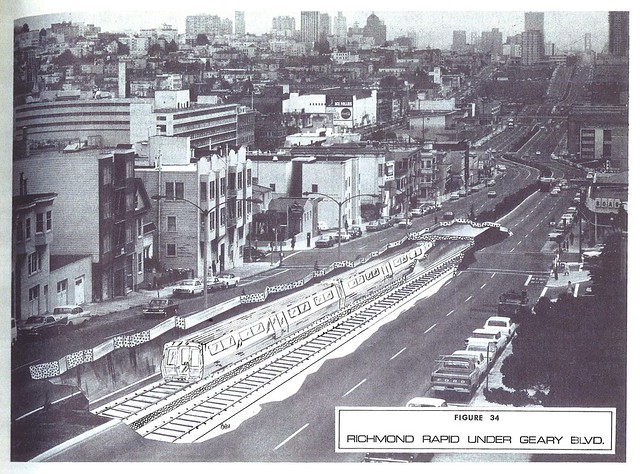Back in the Days…
Learning
a little about Muni’s history will allow us to know how Muni’s system works. Muni was originally owned by private companies
in the 19th century, but starting in 1952, Muni was completely owned and run by San Francisco.
Muni in the 19th Century
Currently, Muni now has 54 bus lines, 17 trolley bus lines, 7
light rail lines, and 3 cable car lines.
Back then,
the average speed of buses was 8.5 miles
per hour, and today, the average speed is 8.1 miles per hour. The buses
today are slower than the buses a century ago!
The first Muni trolleys were
introduced in 1941,
and became the foundation of the Metro we see today.
A New Muni Trolley Pulling an Old Trolley.
Believe it or not, Muni has considered a rapid transit to be built around San
Francisco, but sadly, the proposal did not pass. Well, at least we still have
Bart, but I think if Muni has a rapid transit too, there would be more stops
across San Francisco, and maybe one of it could be at the front of San
Francisco State University? J
Proposed Muni Rapid Transit
On November 2007, Muni thought about adding double decker buses to the Muni fleet
to make buses less crowded, but it did not happen. If it were to happen, it
would definitely make buses less crowded during the mornings and the afternoon.
Also in 2007, hybrid buses were introduced to the Muni fleet,
making less pollution for our environment. (See my previous post, New Buses,
Old Buses).
Just recently, Muni introduced the All Boarding system, which means that
as long as you have a valid proof of payment, you can board through the front
door or through the back door. (If you do not know the types of proof of
payments, please read my previous blog: Risk it and a Ticket).
I found a
very cool YouTube clip about Muni in the 1980’s, and the link is here: http://www.youtube.com/watch?feature=player_embedded&v=7QqggzO237Y#!
We care the most about fares because that is the thing that
affects us the most, so will now list some interesting fare facts:
1912 – Fares
costs only 5₵, but back then, with 5 cents, you can buy a loaf of bread!
1974 – Muni
monthly passes were introduced for $11.
1992 – Fare
costs $1
2003 – Fare
increases to $1.25
2005 – Fare
increases again to $1.50
2009 – Fare
increases to present day $2
As you can tell, Muni fares have been increasing for
a long time, and Muni is also improving by providing better services. Over
these years, costs of operating a transit agency are increasing, so they had to
increase their fares to adapt. Muni has changed dramatically over the century, providing
us with services suitable to our lifestyles. Do you have some interesting facts
about Muni’s history that you want to share? Comment below!




No comments:
Post a Comment